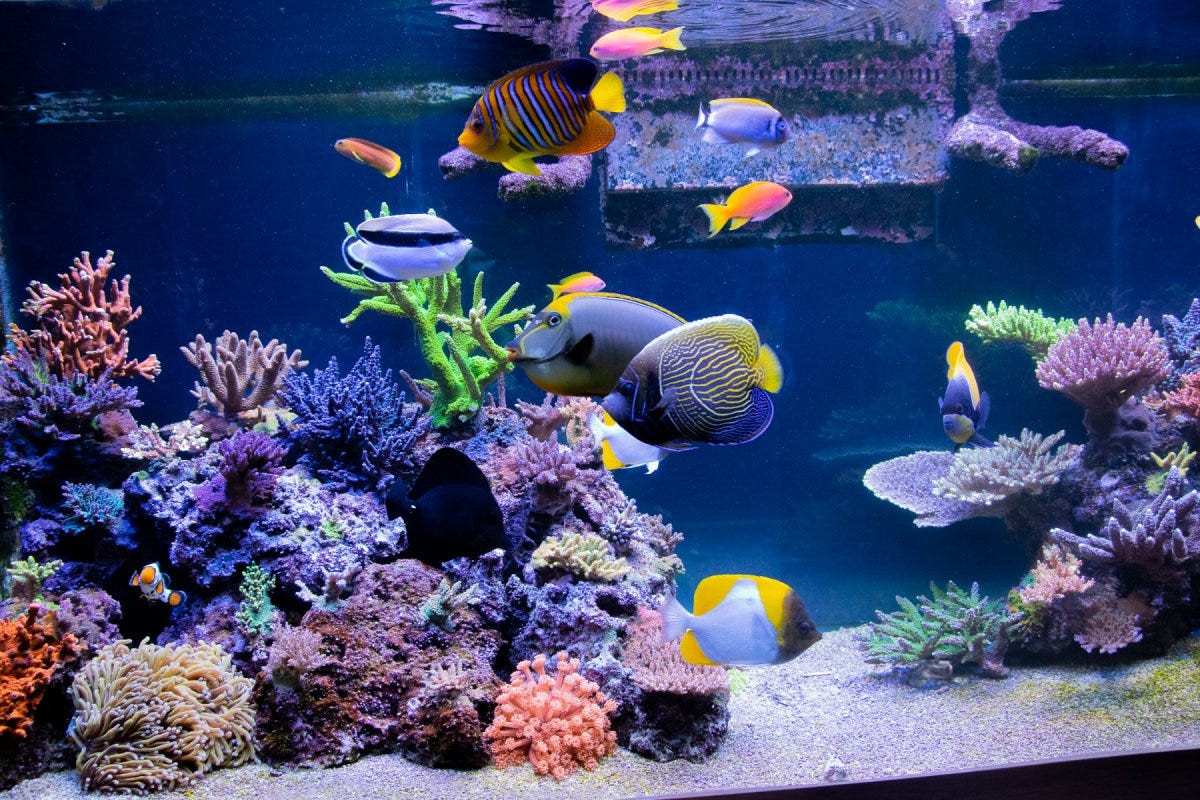Saltwater aquariums teeming with color and life can be breathtaking additions to any house. They require dedication and expertise to thrive.
Water changes are a critical element of maintaining a healthy saltwater aquarium. They remove debris and replenish minerals like calcium, alkalinity carbonate, and magnesium.
Sterilize any water you bring in from outside. You’ll also need to be aware of important parameters like ammonia, pH as well as nitrite, nitrite and nitrate every week.
How to Set Up an Saltwater Aquarium
Saltwater aquariums are a great option to maintain sea life in a safe and beautiful surroundings. They are also extremely exciting. It is however, more costly and time consuming than freshwater tanks and will require more work to maintain. Be sure to be dedicated to your hobby before you begin a saltwater tank.
You need to make sure that you have sufficient capacity of water to fill your aquarium. At least 75 gallons of water per day is sufficient. It is also recommended to have a TDS meter (Testing for Dissolved Solids) to check the quality of your water.
Live rock – Get the best live rock. This can create habitats for corals as well as other marine life in your tank and transform it from a glass container into an ecosystem. Live rock is a magnet for hitchhikers. (Stowaways). These are the mau chan ho ca bang go creatures that could take over your entire aquarium in one blow.
Equipment – Make sure you have an adequate sump to accommodate your heater, powerheads and Skimmer. It’s helpful to make several holes on the stand to enable you to use probes from your control for your aquarium. A journal is also useful for recording your water tests, changes in water and other vital details.
Different types of saltwater aquariums
Saltwater aquariums can be as stunning and captivating as freshwater ones, but they’re a bit more difficult to maintain and start. The most important thing to keep in mind is that live rock is an essential component. It is a habitat for corals, as well as the homes of many marine fishes and invertebrates who are able to burrow into or even bury themselves in it. They include starfishes, wrasses/gobies/mandarin. It can also be home to hitchhikers or stowaways that can destroy the reef with one strike.
Saltwater Aquarium Maintenance Tips
Regular cleaning is essential in saltwater aquariums. The maintenance of a healthy coral tank calls for regular maintenance. The weekly and daily tasks include cleaning the protein skimmer collection cup, filter sock or filter block, wiping down the tank’s glass as well as the tank stand, testing the parameters of the water and feeding the fish and cleaning algae splatters from the glass and equipment. Utilizing an aquarium-safe glass cleaner like Tunze Care Panes makes this task much easier and help in reducing the unpleasant smudges that frequently happen on glass tanks that are saltwater.

A partial water change should be performed on a weekly basis to remove waste products and maintain proper salinity. This is crucial for tanks that are heavily populated or tanks with large pieces that release a large amount of organic matter.
Purchasing an RO/DI system at home is the ideal option to help you complete of your water change every week. It will eliminate having to go to the local fish store and allow you to have pure, clean dechlorinated, reverse osmosis or chlorinated water every time. Prepare the freshwater before altering it by adding salt from marine to it, aerating and heating it up until it reaches the temperature of your tank. This will guarantee that you experience minimum downtime.
Reef Tank Setup
A marine aquarium can be a beautiful and distinctive feature to any home. It’s also an excellent educational tool to teach kids and adults about marine ecosystems, symbiotic relations as well as conservation efforts. Saltwater aquariums are more costly to maintain as compared to a freshwater tank. The initial cost of the equipment, the specialized lighting and the maintenance required to ensure a healthy coral habitat are the primary reasons.
When constructing the reef tank, it is important to choose the appropriate equipment for the tank’s size and style. It is also important to ensure that your tank is a good fit for the location it will be placed in. Avoid windows that allow direct sunlight to reach the aquarium. The sunlight can damage certain corals, and cause them to bleach or become drowned.
The next step is to select the best filtration system for your needs. You should select an FOWLR setup (Freshwater Aquarium With Live Rock) since it will give your reef the most effective biological filter. Live rock is also home to a bustling community of critters and bacteria which help keep your water clean and healthy.
Marine Aquarium Equipment
They are essential for hobbyists of all types however, they are especially useful in saltwater tanks, where temperature is crucial to the success and growth of the tank. Thermometers will make sure that the heater is kept at the proper temperature. A simple thermometer is useful in monitoring the temperature of the water, defrosting out frozen food, as well as operating the filtering system.
The biological filtration system is a vital part of any aquarium reef set-up. It doesn’t matter if use Real-Reef Rock, which is made from man-made materials that support micro-algae for fish to graze upon or live rock that comes from different tropical zones. The use of biological filtration in the reef tank is essential. It is usually complemented by proteins skimmers or mechanical filters that eliminate debris prior to its break down into nitrates and phosphates.
The most important thing is to do your research before setting up a saltwater tank. It’s easy to be overwhelmed by all the different strategies and methods that claim to be the most efficient methods to build your saltwater tank. Stick with one source and study it. Then, as you get more experience, expand your knowledge.
